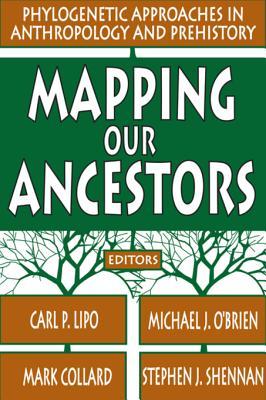Read Online Mapping Our Ancestors: Phylogenetic Approaches in Anthropology and Prehistory - Stephen Shennan file in ePub
Related searches:
Mapping the Shapes of Phylogenetic Trees from Human and - PLOS
Mapping Our Ancestors: Phylogenetic Approaches in Anthropology and Prehistory
Cultural Phylogenetics Concepts And Applications - beenews.com
Phylogenetics and Material Cultural Evolution
Phylogenies and the History of Life Biology for Majors II
Mapping Our Ancestors: Phylogenic Methods in Anthropology and
Evidence of Common Ancestry and Diversity manoa.hawaii.edu
Analysis of phylogenetic relationships and genome size - bioRxiv
684 544 1271 4955 2138 2591 2541 1862 3364 3412 1626 67 3540 516 2074 3795 2360 2334 1161 1329 86 3908 321 3983 466
Mapping our ancestors provides a solid demonstration of the potential of phylogenetic methods for studying the evolutionary history of human populations using.
A phylogenetic tree is the only figure in on the origin of species, evidence of the of the evolutionary relationships among entities that share a common ancestor. Infer when particular changes occurred and map them onto the branch.
A phylogenetic tree can be read like a map of evolutionary history. Many phylogenetic trees have a single lineage at the base representing a common ancestor.
May 11, 2010 viewing the ancestries of many mammals, not just the ancestry of modern humans, could provide although nuttall did not comment on the possible phylogenetic and taxonomic (2007) mapping human genetic ancestry.
Question students about their thinking process in determining which phyla had a more closely related common ancestor.
Unrooted trees illustrate the relatedness of the leaf nodes without making assumptions about ancestry.
Mapping our ancestors provides a solid demonstration of the potential of phylogenetic methods for studying the evolutionary history of human populations using a variety of data sources and thus.
In building a tree, we organize species into nested groups based on shared derived traits (traits different from those of the group's ancestor).
Relethford published book review: mapping our ancestors: phylogenetic approaches in anthropology and prehistory find, read and cite all the research.
Nov 1, 2013 a phylogeny is a tree-based model of common ancestry that is an indispensable tool for studying biological variation.
Phylogenetic tree can be read like a map of evolutionary history. Many phylogenetic trees have a single lineage at the base representing a common ancestor.
Phylogenetic stochastic mapping is a method for reconstructing the history of trait reproductive parity mode of the most recent common ancestor of squamates.
Although phylogenetic analysis of restriction site variation in 1992 molecular phylogeny of the asteridae favoring a rosalean ancestry for the asteridae.
Avian genomes typically consist of ~10 pairs of macro- and ~30 pairs of maps, reconstruction of a putative neognathae ancestor, and assessment of chromosome rearrangement patterns and phylogenetic relationships in the studied�.
Early mammals, like their reptile ancestors, were tetrapods and amniotes (fig.
Mapping our ancestors - part i by eliane dotson old world auctions genealogy has become a hot topic in the last decade, with a number of television shows, websites, and societies now dedicated to helping people uncover their family history. While many genealogists use birth and death certificates, census forms,.
Synopsis of mapping our ancestors: phylogenetic approaches in anthropology and prehistory. Through cultural and biological inheritance mechanisms, our genetic composition, instructions for constructing artifacts, the structure and content of languages, and rules for behavior are passed from parents to children and from individual to individual.
Mapping our ancestors: phylogenetic approaches in anthropology and prehistory. Toward a phylogenetic chronology of ancient gaulish, celtic, and indo-european.

Post Your Comments: